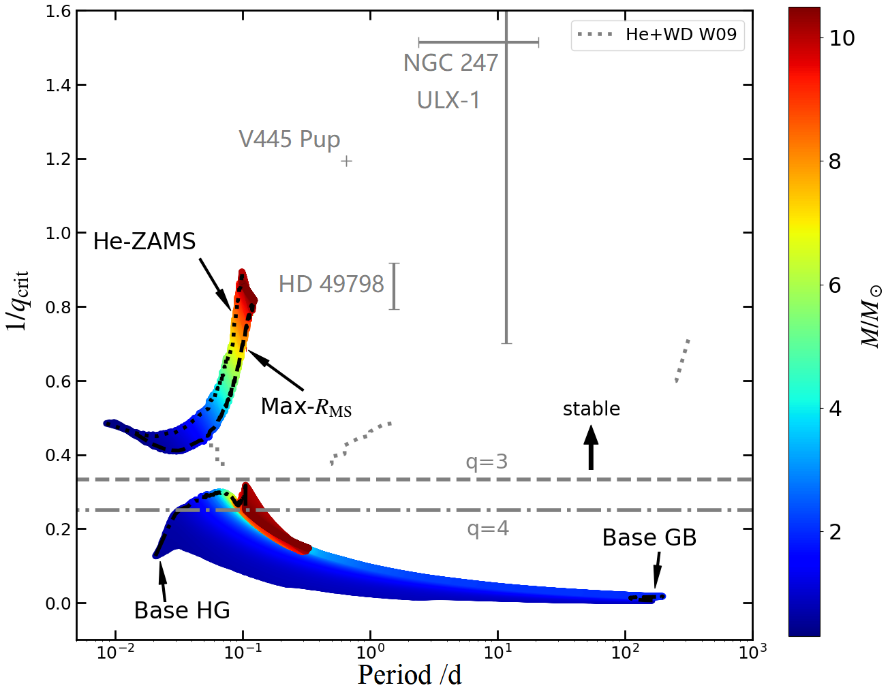Recently, the stability of mass transfer in helium binary systems was first discovered by the PH.D student ZHANG Lifu and other researchers (GE Hongwei; HAN Zhanwen and CHEN Xuefei) from Yunnan Observatories of the Chinese Academy of Sciences. The study was published in The Astrophysical Journal Supplement Series as the fourth part of the series work of the Adiabatic Mass Loss in Binary Stars. In this research, the details of adiabatic evolution of helium star mass loss and the important critical mass ratio during mass transfer were uncovered for the first time.
The helium star is a kind of celestial body that is mainly composed and lighted by helium material. The observation has shown that the helium star is most likely to appear in a binary system. Those stars can be observed as O or B type Hot Subdwarf stars, which probably maintain compact secondaries with very short orbital periods. Thus, it is predictable to find a large rate of helium stars evolving through the mass transfer process.

Figure 1, an introduction of helium star-compact object binary evolution channel. Mass transfer occurs when the helium star evolves into the giant star status after the helium main sequence. Image by ZHANG.
This work systematically studied the evolution stages of the naked helium stars from 0.35 to 10 solar masses. Using the adiabatic mass loss model, researchers provided the critical mass ratio of stable mass transfer at different evolutionary stages of helium stars. Compared to previous criterion, this study has presented new predictions: for helium main sequence star, the stability of mass transfer is lower than previously anticipated, suggesting that more systems will undergo the common envelope phase and the maximum mass of AM CVn’s donor stars must be lower; for helium giant branch star, the stability of mass transfer greatly increase along with the evolution. Before carbon ignition, the last stage of helium star evolution obtains the magnificent critical mass ratio, which contributes to a nonnegligible formation channel for the long-period X-ray binaries and type Ia supernovae.

Figure 2. the relationship between the critical mass ratio and the initial period of mass transfer. Grey dash and dash-dot lines are from the critical mass ratio based on the polytropic model. Image by ZHANG.
This study has, for the first time, presented a detailed stability analysis of the helium star evolutionary channel, which will offer systematic guidance for the binary star population synthesis in this channel. The research outcomes will contribute to revealing the evolution process of helium star binaries and provide a novel perspective on the formation of significant celestial bodies such as helium novae, AM CVn-type variable stars, and compact X-ray binaries.
Contact:
ZHANG Lifu
Yunnan Observatories, CAS
E-mail: zhanglifu@ynao.ac.cn